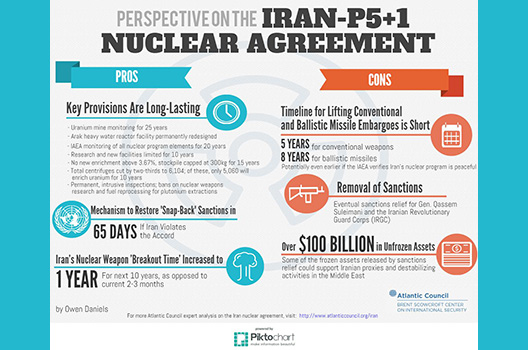 After twenty months of negotiations, US, European, and Iranian leaders announced early Tuesday morning that a deal had been reached to secure the peaceful future of Iran’s nuclear program.
After twenty months of negotiations, US, European, and Iranian leaders announced early Tuesday morning that a deal had been reached to secure the peaceful future of Iran’s nuclear program.
What are the major pros and cons of the deal? For starters, the new deal restricts the amount of nuclear fuel that Iran can stockpile over the next fifteen years, caps its uranium enrichment purity level at 3.67 percent for fifteen years, requires Iran to reduce its current stockpile of low enriched uranium by 98 percent, and reduces the number of centrifuges spinning at Iran’s primary enrichment center for ten years. At the same time, the agreement lifts embargoes on the delivery of conventional weapons and ballistic missiles to Iran after five and eight years, respectively, and possibly sooner if the International Atomic Energy Agency (IAEA) verifies that the Iranian program is peaceful.
Furthermore, the deadly Iranian Revolutionary Guard Corps stands to benefit from eventual sanctions relief, and it is possible that some of the over $100 billion in frozen assets released by sanctions relief could manifest in support for the Assad regime in Syria, Hezbollah, or the Houthis in Yemen.
The deal, with its positive and negative aspects, will have important ramifications for Middle East security for years to come.
Owen Daniels is a program assistant at the Atlantic Council’s Middle East Peace and Security Initiative.
